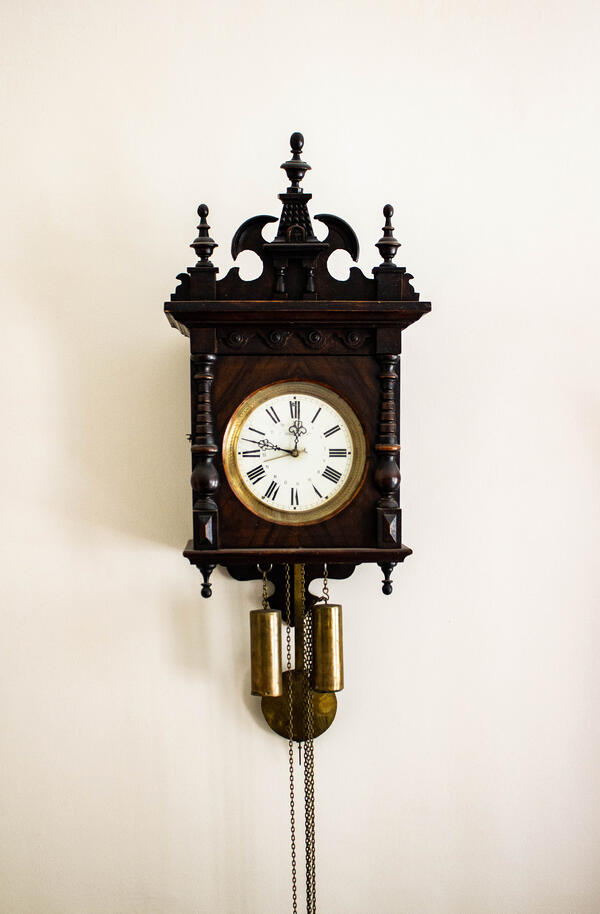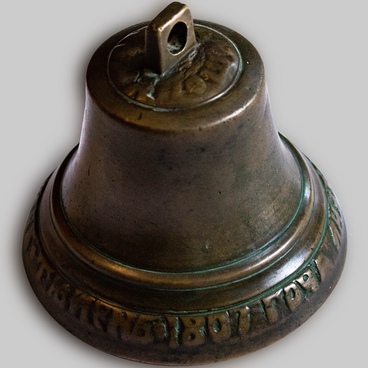In the Postman’s Room, we can find a Swiss wall clock manufactured by master Moser in the early 20th century. Johann Heinrich Moser was born in the Swiss town of Schaffhausen into a family of watch manufacturers. He became an independent watchmaker and successful entrepreneur at a young age. In 1827, Moser moved to Saint Petersburg and founded a commercial enterprise called “Henry Moser& Cie.” In a year, he opened a factory in the Swiss municipality of Le Locle, which at the time was the capital of watch craftsmanship. Only a few dials and cases were produced in Russia, as evidenced by the Russian stamp “H.Moser & Co.” on some pieces and packaging. “Moser” ordered all of the details in the workshops of Le Locle and the watches were assembled in Saint Petersburg. The first watch to have been manufactured in Saint Petersburg was presented to Emperor Nicholas the First.
In 1828, Moser founded a trade office in Saint Petersburg; in 1839, he opened a Trading House in Moscow. The Craft production launched its branch workshops in NIzhny Novgorod and IrbIt. Moser’s trade network spread all over the world, and Swiss watches reached China, Japan, Persia, Siberia, New York, and Kamchatka. The assortment included over 70 models.
In 1848 Heinrich Moser returned to Switzerland. There he built a castle for his family, built a canal on the Rhine with a small power station, and started building a wagon factory. After Moser’s death in 1874, his wife Fanny inherited the trade enterprises and the watchmaker’s workshop in Le Locle.
Throughout the years of its operations, Moser’s factory produced a plethora of various clocks and watches. They were pocket watches, hand watches, wall and table clocks; male and female; watches for sailors, soldiers, and even the blind; with and without strike; in gold, silver. or steel cases of various shapes; chronograph. The pieces were famous for their reliability and durability. Moser’s clients were high-ranking officials. His watch movements were used by the famous jeweler Carl Faberge. In the early 20th century, H. Moser & Cie became a supplier of Empress AlexAndra Feodorovna, which indicated the quality of Swiss watches.
In 1828, Moser founded a trade office in Saint Petersburg; in 1839, he opened a Trading House in Moscow. The Craft production launched its branch workshops in NIzhny Novgorod and IrbIt. Moser’s trade network spread all over the world, and Swiss watches reached China, Japan, Persia, Siberia, New York, and Kamchatka. The assortment included over 70 models.
In 1848 Heinrich Moser returned to Switzerland. There he built a castle for his family, built a canal on the Rhine with a small power station, and started building a wagon factory. After Moser’s death in 1874, his wife Fanny inherited the trade enterprises and the watchmaker’s workshop in Le Locle.
Throughout the years of its operations, Moser’s factory produced a plethora of various clocks and watches. They were pocket watches, hand watches, wall and table clocks; male and female; watches for sailors, soldiers, and even the blind; with and without strike; in gold, silver. or steel cases of various shapes; chronograph. The pieces were famous for their reliability and durability. Moser’s clients were high-ranking officials. His watch movements were used by the famous jeweler Carl Faberge. In the early 20th century, H. Moser & Cie became a supplier of Empress AlexAndra Feodorovna, which indicated the quality of Swiss watches.




